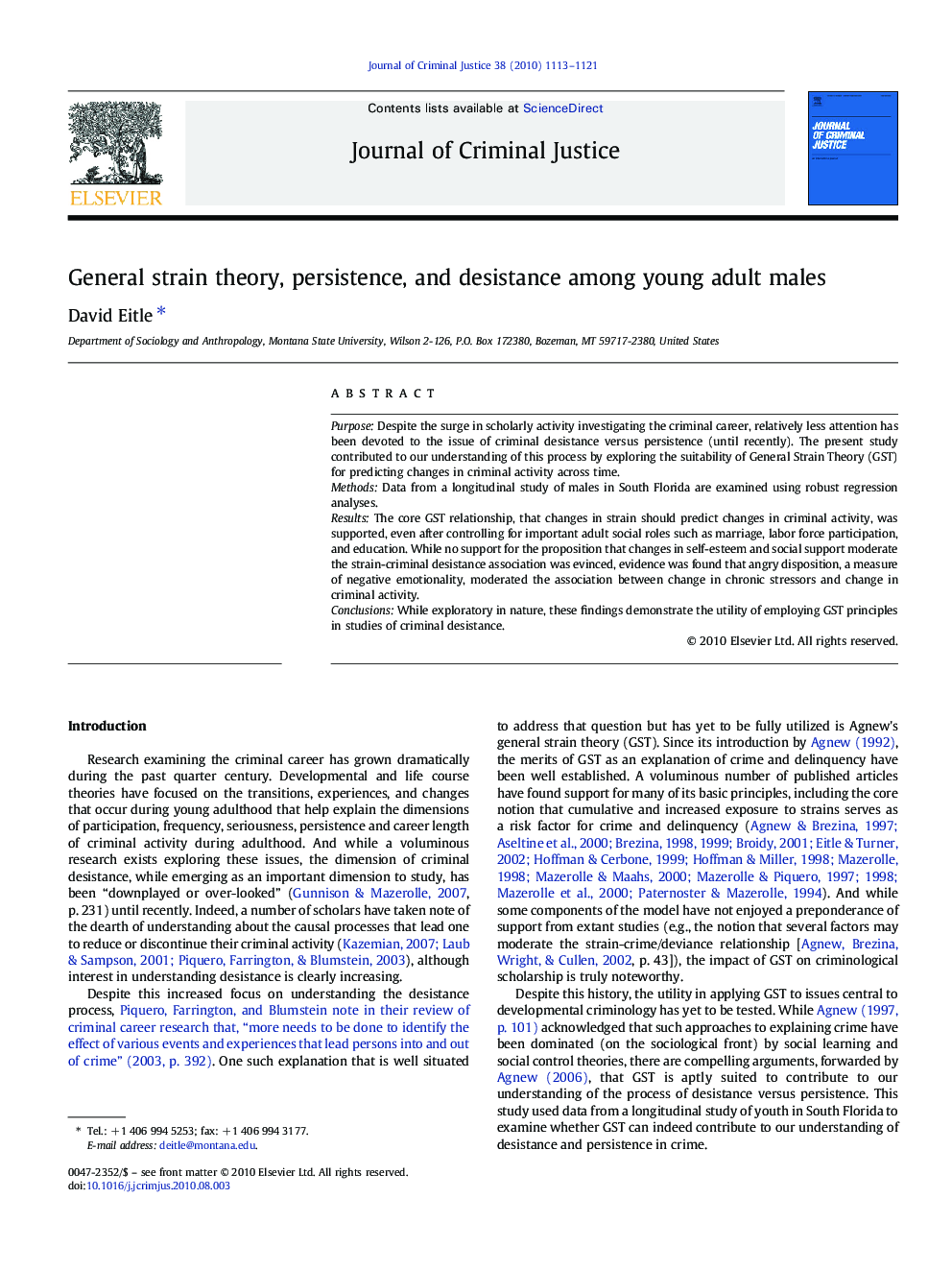| کد مقاله | کد نشریه | سال انتشار | مقاله انگلیسی | نسخه تمام متن |
|---|---|---|---|---|
| 882986 | 912037 | 2010 | 9 صفحه PDF | دانلود رایگان |

PurposeDespite the surge in scholarly activity investigating the criminal career, relatively less attention has been devoted to the issue of criminal desistance versus persistence (until recently). The present study contributed to our understanding of this process by exploring the suitability of General Strain Theory (GST) for predicting changes in criminal activity across time.MethodsData from a longitudinal study of males in South Florida are examined using robust regression analyses.ResultsThe core GST relationship, that changes in strain should predict changes in criminal activity, was supported, even after controlling for important adult social roles such as marriage, labor force participation, and education. While no support for the proposition that changes in self-esteem and social support moderate the strain-criminal desistance association was evinced, evidence was found that angry disposition, a measure of negative emotionality, moderated the association between change in chronic stressors and change in criminal activity.ConclusionsWhile exploratory in nature, these findings demonstrate the utility of employing GST principles in studies of criminal desistance.
Research Highlights
► Present study represents one of the first applications of General Strain Theory to the issue of criminal desistance
► Change scores representing exposure to recent life events and chronic stressors are both found to predict changes in self-reported criminal activity
► An indicator of negative emotionality, angry disposition, is found to moderate the association between changes in chronic strains and changes in self-reported criminal activity
Journal: Journal of Criminal Justice - Volume 38, Issue 6, November–December 2010, Pages 1113–1121